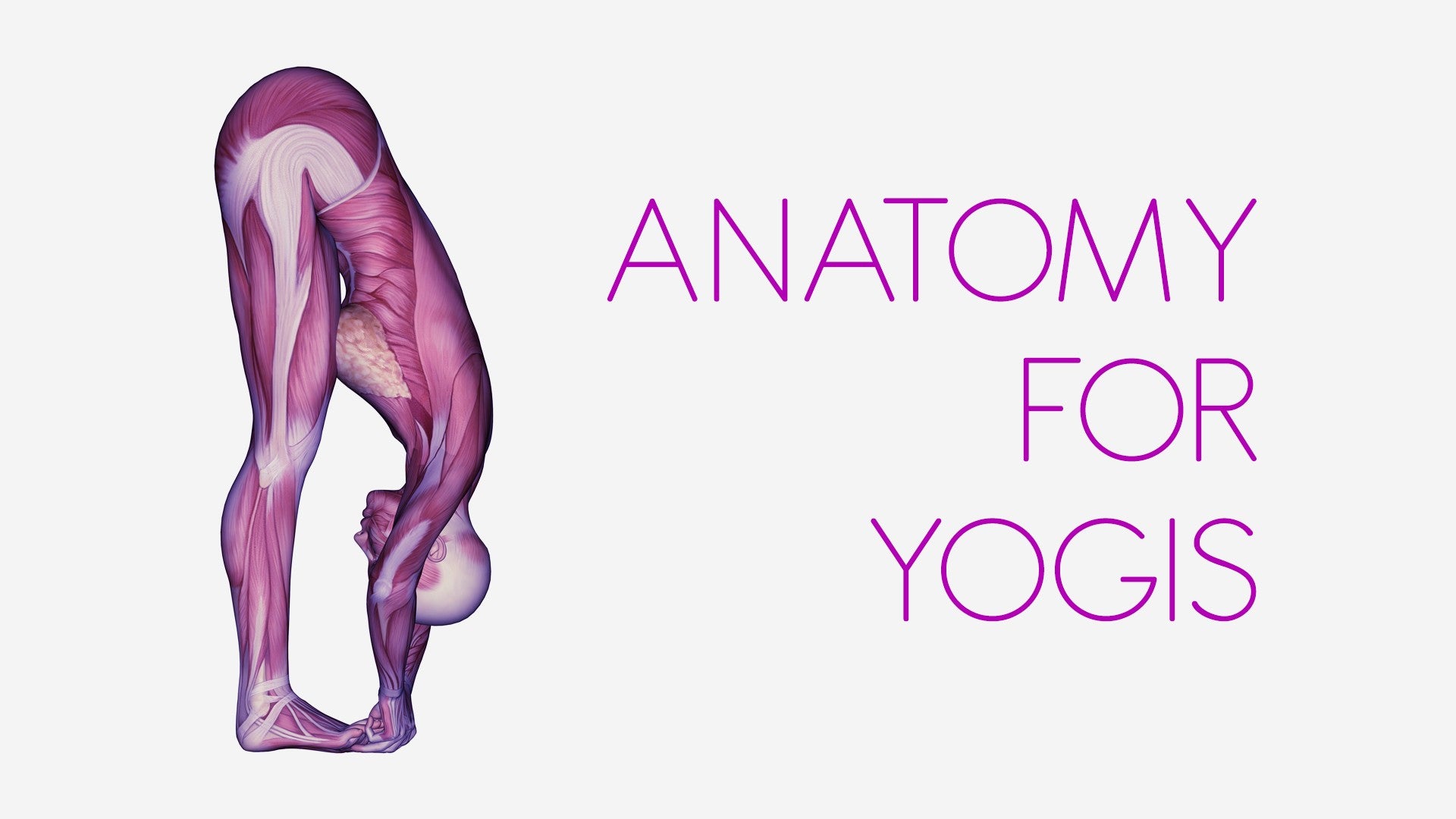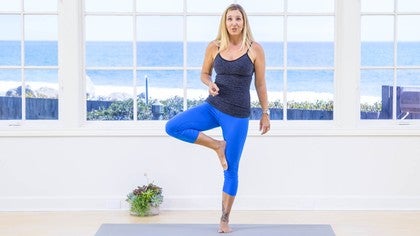Description
About This Video
Transcript
Read Full Transcript
Hi, and welcome to Talk Like Me. It's kind of funny, but it's true. I have a really funny technical way of talking, I get it. When I was researching, I didn't use these words as casually when I started researching, but by the time I was done, I was buried in a pile of glossary terms around stretching and movement, and so now I just know them like I know my name. So we have some basic terms for you. I'm going to start with flexion and extension. I use those a lot. Shoulder flexion looks like this, and hip flexion looks like this. This is also knee flexion. So anytime you're closing a joint angle, it's considered flexion. Spinal flexion would look like this. Oppositely, we have extension. So shoulder extension, hip extension. If you're going to extend the knee from a flexed position, it would look like this, and spinal extension is, of course, back bending. This movement, flexion and extension, exists in a plane that we call the sagittal plane. So all the things we do, like walking, running, cycling, all that stuff is movement in the sagittal plane. So you'll hear me say that again. The next one is rotation. So we have external rotation and internal rotation. Also at the hip, external rotation and internal rotation, and those can exist in the transverse plane. Spinal rotation would be twisting, and again that's the transverse plane. The other one is abduction and adduction. This sounds very similar. One is adduction, and the other one is abduction. So adduction and abduction. When you abduct a limb, you move it away from the body. You abduct, you take it away from the body, and when you adduct, you add it to the body, you bring it in. So abduction and adduction. And that's movement in a plane that we call either the frontal plane or the coronal plane. We move in that plane a lot less often, but like in yoga we do. We come from Tadasana, and we step wide, which is abduction, and then we do rotation, and then we do flexion, and suddenly we're in warrior two. A couple other terms worth knowing are types of muscle contractions. So a concentric contraction moves bones closer together. So here I'm concentrically contracting my biceps. An eccentric contraction is when the bones move away from each other, but there's still force being produced. So I'm not...
if my bicep was totally relaxed, my arm would just drop. If I have something even heavier in here, there's gonna be more contraction if I put a weight in my hand, but here my bicep is eccentrically contracting. So it's getting longer, the bones are moving away from each other, but it's still active. It's a really important part of contractions that we don't do too much in yoga. Some poses, but not all of them. And then the other one is isometric contraction, which is where you don't actually move your bones at all. So you come to a joint position and now suddenly you contract. So I'm flexing my bicep, but I'm not changing joint position. So I can isometrically contract here. I could also go here and isometrically contract. I could go here and isometrically contract, but you basically do a concentric contraction to move to a joint position and then fire. This is very important because the degree to which you fire those muscles is how the body adapts. That's all I'm really gonna say about that, because that's an eight-hour lecture that I give. But the idea is that if you're just, if you're not contracting with a lot of effort, the adaptations will be very, very slow, if any. So you'll hear me say contract maximally, and that means get into the pose, like warrior two, and then contract the muscles in that joint position so that we can influence the tissues and the joints as well. So I hope that clarifies sort of what I mean by that. And then another one is active and passive, and I do a really nice short on tree pose to demonstrate active and passive mobility. It's basically, if you want to do a real short one here, it's, this is my passive range of motion in my hip joint, so I'll do it sideways so you can see better. This is my passive range, but active means there's no help at all, and that means my active is pretty close. If you are passive here, but at active you drop down, that would be the difference between your active and passive. And the little last thing I'm gonna talk about is mobility and flexibility. Like what's the difference? It's a little complicated. I see them more as a continuum, but technically speaking, mobility is what my joint capsule is able to withstand, how my joint can move. That's my mobility, and my flexibility is what the soft tissue can do. So how much can the soft tissue yield before it returns? Because those soft tissues are very elastic, like a rubber band. So this would be hip mobility here of the joint, because I've softened the hamstrings, but now if I start to straighten the knee, now I'm pulling the hamstrings and stretching them, and that would be my flexibility. It's the easiest way to explain it. However, I don't think the body is separated into joints and soft tissue, so for me it's more of a continuum. It's, you're constantly riding between what your joints are capable of and what your tissues are capable of, and so you're always working the two. It doesn't really help to separate them. They're just kind of buzzwords that we use just to get through the class. So anyway, I hope that helps. If you start using those words, you will talk like me. I don't suggest you do that, but either way, if you want to review this before some of the classes, it might help you get through them a little easier. So thanks for being here. Namaste.
Anatomy for Yogis: Jules Mitchell
Comments
You need to be a subscriber to post a comment.
Please Log In or Create an Account to start your free trial.








Thanks Jules!